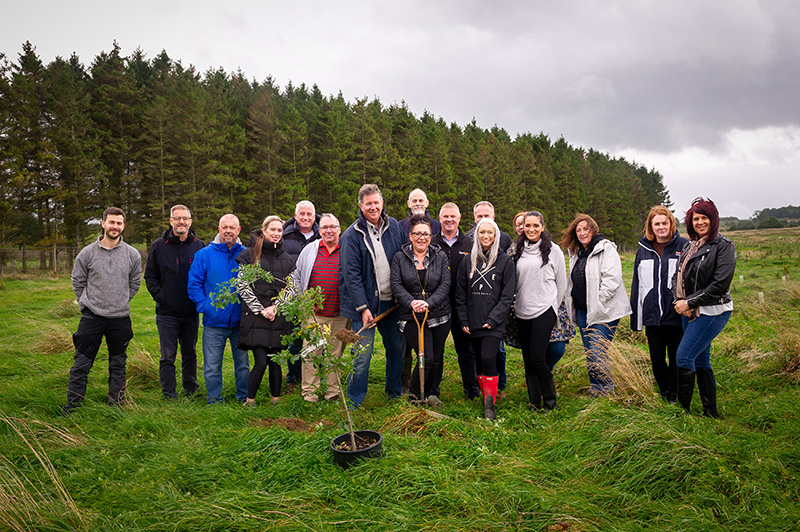
IN partnership with Forest Carbon, Antalis recently hosted a tree-planting day at its woodland creation project in Cumbria.
Antalis hosted customers Coventry Building Society, Egan Reid and The Printroom at the tree-planting day at The Croft on the Lowther Estate in Penrith.
The day saw the planting of a native oak, adding to the 9,000-plus broadleaf and coniferous trees Antalis and its customers have already planted on the six-hectare site as part of a carbon offsetting scheme. Through the planting and management of these trees, Antalis revealed over 2,500 tonnes of carbon dioxide will be captured.
The Croft is one of four schemes Antalis and its customers are supporting through the partnership with Forest Carbon. 4,000 native broadleaf trees have also been planted on a 2.5-hectare site at Thorney Coppice near Kettering, Northants. A further 31,557 broadleaf and coniferous trees have been planted on just under 16 hectares at Doddington North near Wooler, Northumberland.
Antalis has also partnered with Forest Carbon on an international project: ECO2 Rubber in Guatamala. The project has supported the restoration of over 2,000 hectares of degraded and over-farmed land and created more than 300 permanent jobs in low access communities.
Antalis first contacted Forest Carbon in 2014 to see how they could work together to support forest growth and carbon capture.
To date, Antalis and its customers have planted almost 50,000 trees, restoring 30 hectares of ecosystem and capturing over 9,000 tonnes of CO2.
Antalis sustainability manager Matthew Botfield said, “Our partnership with Forest Carbon helps us provide our customers with a quality assured and transparent means of contributing to nature based carbon reduction projects – offering a way of addressing the carbon generated through the manufacture and delivery of the wide range of Antalis products they use. Together, we’re helping to restore indigenous woodland and biodiversity, which in turn supports flood mitigation and soil and water protection.”












